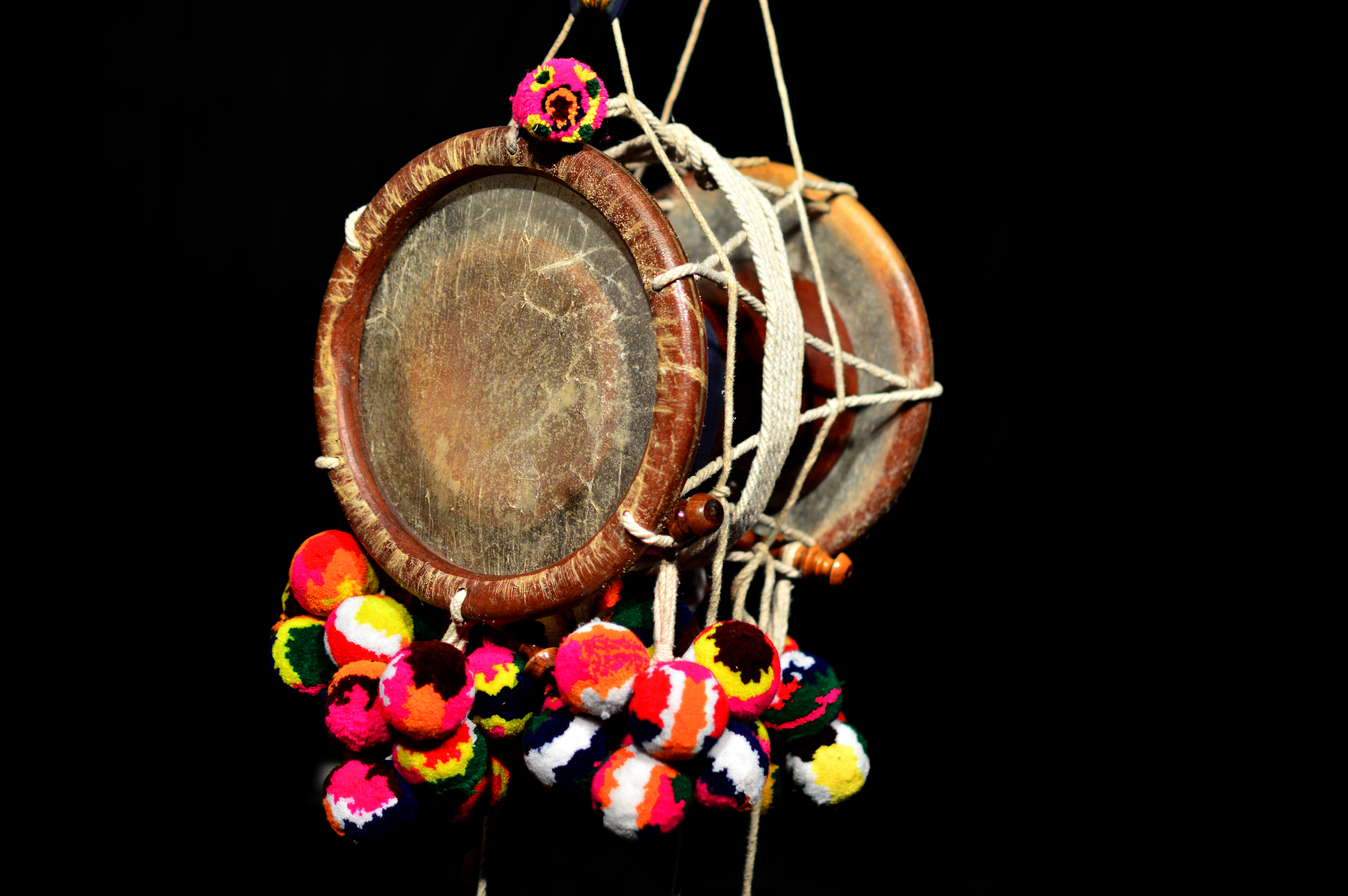Edakka on:
[Wikipedia]
[Google]
[Amazon]
 The ''idakka'' (), also spelt edaykka/edakka, is an hourglass-shaped drum from
The ''idakka'' (), also spelt edaykka/edakka, is an hourglass-shaped drum from

 The Idakka is a small, high pitched drum with definite pitch. The snares running under the drum heads have been found to interact with the vibrating membrane in a way that causes the pitch of the instrument to be determinate. Different pitches can be obtained by squeezing the lacing around the instrument, which changes the amount of tension in the skins.
The Idakka is a small, high pitched drum with definite pitch. The snares running under the drum heads have been found to interact with the vibrating membrane in a way that causes the pitch of the instrument to be determinate. Different pitches can be obtained by squeezing the lacing around the instrument, which changes the amount of tension in the skins.
Kerala
Kerala ( ; ) is a state on the Malabar Coast of India. It was formed on 1 November 1956, following the passage of the States Reorganisation Act, by combining Malayalam-speaking regions of the erstwhile regions of Cochin, Malabar, South Ca ...
in south India. This handy percussion instrument is very similar to the pan-Indian damaru
A damaru ( sa, डमरु, ; Tibetan ཌ་མ་རུ་ or རྔ་ཆུང) is a small two-headed drum, used in Hinduism and Tibetan Buddhism. In Hinduism, the damaru is known as the instrument of the deity Shiva, associated with Tant ...
. While the damaru is played by rattling knotted cords against the resonators, the idakka is played with a stick. Like the damaru, the idakka's pitch may be bent by squeezing the lacing in the middle. The idakka is slung over the left shoulder and the right side of the instrument is gently beaten with a thin curve-ended stick. It is played in temples and in performances such as Kathakali and Mohiniattam classical dance.
Etymology
The Malayalam name idaykka or idakka is originated from theSanskrit
Sanskrit (; attributively , ; nominally , , ) is a classical language belonging to the Indo-Aryan languages, Indo-Aryan branch of the Indo-European languages. It arose in South Asia after its predecessor languages had Trans-cultural diffusion ...
word श्रीढक्का (Śrīḍhakkā). In Sanskrit
Sanskrit (; attributively , ; nominally , , ) is a classical language belonging to the Indo-Aryan languages, Indo-Aryan branch of the Indo-European languages. It arose in South Asia after its predecessor languages had Trans-cultural diffusion ...
, a ḍhakkā is described as a double drum which makes ''ḍhak'' sound. ढक् इति गभीरशब्देन कायतीति (ḍhak iti gabhīraśabdēna kāyatīti). The sacred prefix Śrī is used to denote the auspiciousness of the instrument. 
Construction
Similar to the talking drum, The Idakka consists of two circular drum heads each of which is mounted within a circular ring. The hourglass-shaped body is placed between the two heads and lacing is used to pull the two rings towards each other, stretching each drum head over an open end of the body. Snare-like strings made of natural fiber are stretched across the open ends of the drum body, under each drum head. It is not uncommon for the diameter of the drum heads to be larger than the diameter of the body, with the result that the drum heads are often seen mounted significantly off-center.Acoustics
 The Idakka is a small, high pitched drum with definite pitch. The snares running under the drum heads have been found to interact with the vibrating membrane in a way that causes the pitch of the instrument to be determinate. Different pitches can be obtained by squeezing the lacing around the instrument, which changes the amount of tension in the skins.
The Idakka is a small, high pitched drum with definite pitch. The snares running under the drum heads have been found to interact with the vibrating membrane in a way that causes the pitch of the instrument to be determinate. Different pitches can be obtained by squeezing the lacing around the instrument, which changes the amount of tension in the skins.
See also
*Damaru
A damaru ( sa, डमरु, ; Tibetan ཌ་མ་རུ་ or རྔ་ཆུང) is a small two-headed drum, used in Hinduism and Tibetan Buddhism. In Hinduism, the damaru is known as the instrument of the deity Shiva, associated with Tant ...
* Pandi Melam
Pandi melam is a classical percussion concert or melam (ensemble) led by the ethnic Kerala instrument called the chenda and accompanied by ilathalam (cymbals), kuzhal and Kombu.
A full-length Pandi, a melam based on a thaalam ( taal) with s ...
* Panchari melam
Panchari Melam is a percussion ensemble, performed during temple festivals in Kerala, India. Panchari Melam (or simply panchari), is one of the major forms of Chenda Melam (ethnic drum ensemble), and is the best-known and most popular in th ...
* Thayambaka
Thayambaka or tayambaka is a type of solo chenda performance that developed in the south Indian state of Kerala, in which the main player at the centre improvises rhythmically on the beats of half-a-dozen or a few more chenda and ilathalam pla ...
* Panchavadyam
Panchavadyam (Malayalam: പഞ്ചവാദ്യം), literally meaning an orchestra of five instruments, is basically a temple art form that has evolved in Kerala. Of the five instruments, four — timila, maddalam, ilathalam and idakka ...
* Tripunithura Krishnadas
M A Krishnadas, also known as Tripunithura Krishnadas is an Indian musician. He is a well-known edaykkya (or Idakka) and chenda artist from Kerala. He is the best edaykkya player of modern Kerala.
Music career
Krishnadas was inducted into ...
* Talking Drum, another drum in West Africa
West Africa or Western Africa is the westernmost region of Africa. The United Nations defines Western Africa as the 16 countries of Benin, Burkina Faso, Cape Verde, The Gambia, Ghana, Guinea, Guinea-Bissau, Ivory Coast, Liberia, Mali ...
with an hour-glass shape.
References
{{Culture of Kerala Arts of Kerala Kathakali Mohiniyattam Drums Membranophones Indian musical instruments Kerala music